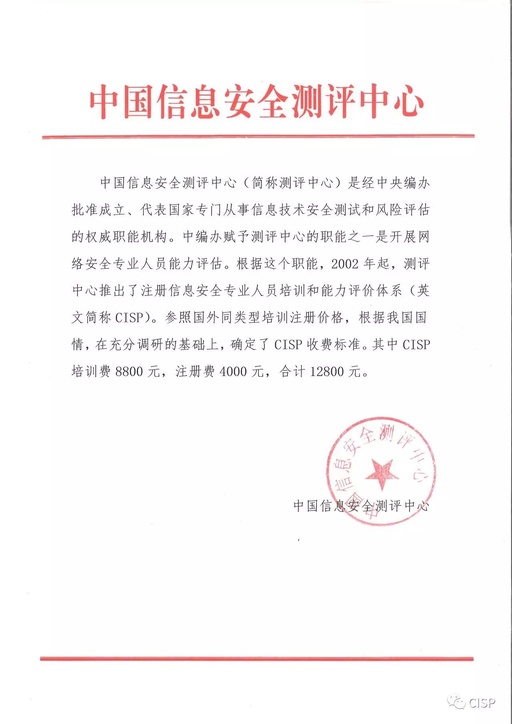Proc.ofIEEE2008.IEEE(inpress).CopyrightIEEE
“Idon’tunderstanditeither,butitiscool”–VisitorInteractionswithaMulti-TouchTableinaMuseum
EvaHorneckerTheOpenUniversity,MiltonKeynes,UK/Dept.ofCIS,UniversityofStrathclyde,Glasgow,UK
eva@ehornecker.de
Abstract
Mostresearchpresentsfindingsfromlabbaseduserstudies,focusingonspecificinteractiontechniques.Thismeanswestillknowlittleabouthowthesenewinterfacesperforminreallifesettingsandhowusersappropriatethem.Thispaperpresentsfindingsfromafieldstudyofanexistinginteractivetableinamuseumofnaturalhistory.Visitorswerefoundtoemployawidevarietyofgesturesforinteracting;differentinterfaceelementsinviteddifferenttypesofgesture.Theanalysishighlightschallengesanddesignconflictsinthedesignofinterfacesforpublicsettings,suchaslatencytimesandside-effectsof‘frame-less’content,whichhadsomeusersstrugglingtolearnhowtointeract.Whilethemajorityofvisitorsengagedatleastbrieflywiththetable,whichenabledbrowsingquestion-answertextaboutanimalspecies,talkamongstvisitorsdealtmainlywithhowtointeractandevokedments,indicatingshallowengagementwithcontent.
1.Introduction Mostresearchtodatepresentslab-baseduserstudiesthatinvestigatespecificinteractiontechniques.Relativelyfewpublications[12,15]discussfieldstudiesorusertestsconductedoutsideofthelab.Suchfieldstudiescanprovideuswithricherinsightsintothefactorsthatinfluenceinteraction,inparticulartheroleoftheusecontext. Interactivesaremakingtheirwayintopublicspaces,suchasmuseums[8]andretailstores.Thisprovidesauniqueopportunitytoinvestigateuserinteractionin-situ(cf.[9,18]).Inthesesettingsusersarefreetointeractornot.Theyareconfrontedwiththesystemwithoutanyintroductionastoitspurposeandfunction,letaloneonhowtouseit.Thesystemhastosurviveonitsown,inanenvironmentfullpetingobjectsofattention.Anotherusefulqualityofpublicspacesisthediversityofusers,ofdifferentages, educationalbackgrounds,experienceswithandattitudestowardstechnology. slendthemselvestobeingusedasamuseuminteractive:theyprovidespaceandgiveesstomultiplevisitors,inviteto“gatherroundthetable”,andallowforplayfulinteractionwhilekeepingtechnologyinthebackground[8].Butitisnotnecessarilytheinstallationswiththemostinteractivity(orthemostcontent)thatmakegoodandengagingexhibits[1,9,18].Thequestionisthus,whattypeofapplicationisbestsuitedforthemuseumcontext,andhowinteractivescanintegrateintoit. Thispaperpresentsfindingsfromafieldstudyofaninteractivetableinamuseumofnaturalhistory.The‘TreeofLife’tablewasdevelopedanddesignedbythewell-knownGermanmediapanyART+COMaspartofthemake-overandrenovationoftheBerlinMuseumfürNaturkunde,whichre-openedaftertwoyearsofclosureinJuly2007.Thestudyusedthissetupasanopportunitytoinvestigatehowpeopleunderstandandengagewithaninteractivetablewithouthavingbeenprimedorinstructedhowtouseitandtoitsfunctionalityandcontents,andtoassessitsfitwithinthemuseumcontext.
2.TheStudy 2.1.Location:MuseumfürNaturkundeBerlin TheBerlinMuseumofNaturalHistory[12]isoneofthelargestmuseumsofnaturalhistoryworldwide.ItwasseverelydamagedinWorldWarII.Withabidforpublicmoneyitbecamepossibletorenovateandredesignfourofthemajorexhibitionhalls.Themuseumhasbeenhugelypopularsincere-openingin2007,drawing250.000visitorswithinthefirst12weeks.Visitorsaremostlyfamilieswithchildrenandadultswithaninterestinnatureandgeology. Therenovatedwingsfeatureseveralinteractiveinstallations[2],mostprominentlytheJurascopes,mediallyaugmentedtelescopesthatbringtolifethe dinosaurskeleton,andthe‘TreeofLife’table.Moreovertherearenumerous‘dynamiclegends’,informationpanelsforexhibitswithtextsanddiagrams,wherevisitorscanchooseimages,filmsandanimationsonrelatedthemesrunningonintegratedscreens.2.2The‘TreeofLife’Table The‘TreeofLife’tableislocatedinahalldedicatedtoevolution,whichislitprimarilyfromilluminatedsee-throughshowcasesformingaisles.Thetableislocatedtowardstheendofthehall.Itis75cmhighandhasa1.15x2.15mprojectionsurfacewitha15cmborderallaround.It-projectedandemploysacapacitivesensortechnology,patentedbyART+COM,whichcanmakesurfacesofanysizemulti-touchinteractive.Withthisparticulartechnology,asasideeffect,thesystemsometimesreactstousers’bodiesatashortdistancefromthesurface(abodyoffluidclosetothesurfacecanalreadycreateanelectricfield) Theapplicationcanbecategorizedasinformationbrowsing.Visitorscanchoosefromquestionsthatpopupandrelatetospecies,suchas‘Aremarsupialyoungborninsidethepouch?
’or‘Aretheremaleandfemaleearthworms?
’Whensomeonetouchesaquestion,ananswerappearsconsistingoftextandphotos.Thetablesizeallowsforfourdistinctareaswithonequestioneach,twooneachlongside.Thisreducespotentialinterference(notedin[14]),asinteractionsonlyaffectonequestionarea.Allelements(pictures,text,icons)seemtofloatonawhitesurface,fadinginandmovingsubtlyintoplacewhentheyappear(figure1). Figure1.Setupoftableandtypicalscene. Figure2.Renewphasewhenshootsevolve. Aboutevery7minutes,thequestionsdisappearforageneraltextonevolutionaroundwhichworkofplant-likethreadsorshootsevolves,representingtheevolutiontree(figure2).Thisisreferredtoas‘Renewphase’.Afterawhile,thequestionsappearslowly,consistingofapictureinacircle(bubble)andatextualquestion.Theiconofahandnexttobubblesprovidesacueforuserstotouchthem.Ontouchingabubble,itisreplacedbytwolargerbubblescontainingimagesandaclose-upoftheevolutiontree,andatextualanswer(figure3and4).Usuallytextistoolongtobeshownfullyintheavailablespace(awindowwithtransparentborders).Arrowsforscrollingarelocatedonitsleft.Touchinganddraggingitcanalsoscrolltext.VisitorscantogglebetweenEnglishandGermanbytouchingasmallercirclenexttothetext.Afterawhilethisbubbleisreplacedbyan‘X’buttonthatclosesthecurrentquestion-answer.Topreventvisitorsfromidentallyclosinganitem,the‘X’buttonhasalonglatencytime,andbeforeactuallyclosing,contractsandexpands.Thedesigntakesintoountthatcapacitivesensingisnoturate,asallinterfaceelementsarequitelarge. Asasecondlevelofinteraction,peoplecaninteractwiththeshootsthatrepresentthetreeoflife.Ontouchingthesurfaceshootsgrowfromthetouch,and,driftaway,appearingtojointhetreeoflife(figure4).Duringthe‘Renewphase’thisseemstospeedupthecreationoftheevolutiontree.Duringthenormalinteraction,theshootsevolveoutoftouchurringoutsideofbubblesandtextualareas. InformationaboutthedesignbriefcouldbegatheredininterviewswithART+COMstaff,butunfortunatelythemaindesigneroftheapplicationhadleftpany.Therationaleofdetaileddesigndecisionsthuscannotbereconstructed.Anoverarchingdesignrationalewastoallowforplayfulengagementics,differentlevelsofess,andtokeepchildrenengaged(e.g.withtheshoots)whileadultscanread.Exhibitsshouldsupportfamilyinteraction,andprovidespaceforparentstoexplainandmediatechildren’sattention.Themajorityofinteractivesshouldhaveaservingfunction(thedynamiclegends),andmedialhighlightsshouldnevereamainfeature. 2.3StudyApproachandDataCollectionThestudyfollowedarapidethnographyapproach, drawinguponprinciplesofethnographicresearchandinteractionanalysis[3,10],startingfromopen-endedobservationanditerativelyevolvingissuesfordetailedanalysis.ObservationsfocusedontheJurascopesandtheinteractivetable,butincludedotherexhibitsandhallstogetasenseofhowthenewinstallationsintegrateintothemuseum.Thisfurthermoreallowsparisons,themoretraditionalexhibitsprovidinga‘benchmark’oftypicalactivitiesandconversationsthatvisitorsengageininthismuseum.Thispaperfocusesonlyonfindingsregardingtheinteractivetable. ThestudycoincidedwithschoolvacationsaroundBerlin.Hence,themuseumwasverybusy.Overthecourseofsevendays,includingaweekend,participantobservationswereconducted.Visitorswereinformedattheticketdeskaboutthestudy.Theresearcherwalkedaroundandforfocusedobservationssatclosetoexhibits,takingnotesofinteractionsandconversationsthatcouldbeoverheard.Sometimes,takingnoteswasnotpossible,e.g.whenveryclosetovisitors. Overall,38pagesofA5handwrittennotesweregeneratedinopenobservationatthe‘TreeofLife’table,correspondingtoaboutthreehoursofloggedobservation.For1:10hour(sampledatfiveperiods)it Figure3.Thepartstoananswer(textatend) Figure4.Top:questionpictureinvitestotouch.!
X"buttonexpanding.Bottom:Scrollarrows,shootsappearwhereyoutouch. waslistedwhethervisitorswenttothetable,interactedwithitorobservedothers,read,orpassedby.Supplementingthenotebook,aphotodocumentarywascollected,supportingrecollectionofeventsintheabsenceofvideodata,andenablingfurtheranalysis,e.g.ofpatternsofvisitorpositioningandpostures,treatingthemasanothertypeofdocumentarydata. DuetoprivacylawsinGermany,videosurveillanceinpublicspacesisseverelyregulated.Audio-orvideorecordingrequirespriorwrittenconsent.Tocollectvideodata,fivegroupswererecruitedtobeshadowedthroughoutthemuseum(rewardedwithfreeentry).Thismakestheresearchermoreofaparticipantobserver,groupstreatingthemovertimelikeanothergroupmember,andeasesrecordinginteractions,improvingaudibilityandvisibility.Furthermore,itprovidesopportunityforin-situinterviews,participantsusuallymentingonwhattheylikeordislike.Theresearcherpaniedthesegroupsduringtheirentirevisit,videotapingalleventsaroundtheexhibitsinfocusplusrandomlythroughoutthemuseum. Thefollowinggroupswereenlisted:threeflatmatesintheirmid-twenties(acoupleandafemale);ayoungfamilywithchildrenagedthree(m)andfour(f);acoupleaged65,theirmid-twentiesdaughter,afemalefriendofthedaughterandhermother,allpassionatehobby-paleontologists;sixfriendsintheirend-twentiesthatoftensplitupintwogroups;andawomanwithherson(aged4),hisbestfriend(aged5)andan18montholdbaby.Onlytheyoungfamilyhadbeeninthemuseumsinceitsreopening.Thevisitslastedbetweenonehour(groupswithchildren)andthreehours.Thisresultedin30minutesofvideofromfivesub-groupsinteractingwiththetable(theyoungfamilydidnotmakeitmuchfurtherthanthedinosaurhall),whichhavebeenfullytranscribedandanalyzed.
2.FindingsandObservations 2.1.ADiversityofGestures Observationandvideoanalysisrevealedvariedandrichgestures,oftenusedplayfullyandperformatively(cf.[14,17]).Mostpeopleimmediatelystartedusingmulti-fingeredandbimanualgestures,anddidnothesitatetotouchthetablesimultaneouslywithotherusers.Thiscontrastswiththeobservationsby[6,15]andislikelyduetothefactthatthistablehadlittleresemblancetoputerinterfaces. Differentinterfaceelementsseemedtoinvitedifferenttypesofgesture.Inparticulartheshootsevokedrichmulti-fingeredinteraction.Visitorsstrokedoverthesurfacewithfingersoraflathand,almostcaressingit,swipedit,shuffledtheirhands,tappedtheirfingerslikeawalkingspider,orknockedonthetable(see figure5).Thebubblesandarrowsevokedgesturesmorereminiscentofpointingorbuttonpushing.Figure6showsthatthesewerealsoquitevaried,andnotalwaysperformedwithonefinger,butwithseveralorwithotherthantheindexfinger.Thebubbles,especiallythosewithablackcircle,frequentlyhadpeoplequicklytappingthemlikeamechanicalpushbutton.Thiswasseenwiththequestionbubble,thelanguagetoggle,andthe‘X’,andpersistedevenifitdidnothavethedesiredeffect(withthe‘X’). anicshapeandbehavioroftheshootscorrespondtovisitor’sgesturalinteraction.Astheshootsgroweverywhere,theyinvitebimanualinteraction.Thebutton-shapeditemsevokeresponsesreminiscentofphysicalbutton-pushing(quick,hardpushesandhits)andoftouch-screeninteraction(onefingertapping).Incontrasttoe.g.theCityWallinteractivewindow[14],therewereonlyfew‘throwing’or‘sliding’gestures,sincetheapplicationdidnotsupportotheractionsotherthantappinganddraggingoftext. 2.2.Discoveringhowtoworkthesystem Overallvisitorsshowednosignsofbeingintimidatedbythetechnologyandhadlittlehesitationtotouchandinteractwiththetable(butoften,outofcuriosity,peoplelookeduptotheprojectororexploredhowclosetheyneededtobringtheirhandtothesurface)andwithouthesitationinteractedsimultaneously.ThisisverysimilartoRyalletal’sobservations[15]. Somefeaturesofthetableinterfaceworkedwellinprovidingcuestothevisitorsastohowtointeract.Forexample,thehandiconinviteduserstotouchthequestionbubble.Oncevisitorsstartedinteracting,thegeneralfunctionalitytendedtobediscoveredquicklyandwasoftenpickedupfromobservingothervisitors. Yetcloseanalysisofthevideosandnotesfromtheobservationsrevealedseveralissuesresultingininteractionproblems.Eveniftheseissuesseemminor,theycandetermineessorfailureofamuseuminstallation.Hereimmediateapprehendability[1]isimportant-ifanexhibithasaboring,effortfulorponent,visitorsareunsureabouttherewardforpersisting,andarelikelytomoveon.Visitorsneedtoexperienceessearlyandpetent,andtounderstandthepurpose,scopeandpropertiesoftheobjectalmostimmediately[1,5,7]. 2.2.1.Inconsistentbehaviorsandlatencyissues.Interfaceitemsthatlookedsimilarwereassumedto behavesimilarly.Manyitemslookedlikebubbles,heldinacircle.Visitorsoftentriedtotapthebigbubblesthatcontainchangingimages,butarenon-interactive: Oneoftheyoungmeninthegroupofyoungadultspointsatthebigbubbleshowingthesectionoftheevolutiontreethatthecurrentquestionrelatesto:“andthenyoucan”.Hetouchesthebubbleandtriestodragthetreebranches:“Canyoudoanythinghere?
”,tappingthetextinside.Aminutelaterhetriestodragthebubblecontentsagain.Otherbubbleshadslightlydifferentbehaviors.Thelatencyofthe‘X’ismeanttopreventidentalclosingofaquestion-answeritem,butdiffersfromotherobjects.Itoftentookvisitorsseveralattemptstocloseaquestion-answeritembytappingthe‘X’rapidlyandwithforce(likeamechanicalpushbutton),aninteractionthatworkedfortheotheritems.Havingthe‘X’shrinkandexpandonce(indicatingthefunctiontobeinvoked)beforeexecutingincreaseddifficultiesevenmore.Oftenpeoplewould,onseeingthisinitialresponse,releasetheirtouch,cancelingtheaction.Inthiscasethereisaconflictbetweenpreventingusersfromidentallyactivatingafunctionthat Figure5.Gesturesinplayingwiththeshootsweremulti-fingered,andoftenusedtheentirehandFigure6.Interactionwithbubblesandarrowsusedone,butalsomultiplefingers,andtapping. makesthemlosecontentandeaseofinteraction.Thevisualresemblancewithotherbubblesthatreactquicklyandtophysicalbuttonstriggersaresponseofquicktapping.Inthisspecificcase,thevisualsneedtoindicatetheneedforprolongedpressingandofhowmuchlongerthetouchhastogoon(progressbar). 2.2.2.Scrollingtext-whichway?
Thequestion-answeritemsaredesignedtoblend intotheoverallaestheticsofthetable,avoidingresemblancewithputerinterfaces.Textappearstobefloatingonthewhitesurface,subtlyblendinginandout.Eventhoughspacefortheanswerislimitedtoadefinedarea,itsframeisnotvisualized.Forscrolling,twomechanismsareavailable:1)thearrowsleftofthetextand2)directmanipulationdraggingofthetextitself.Somevisitorsfirstdiscoveredthedraggingmechanismanddidnotseemtotakenoticeofthearrows.Othersneverdiscovereddragging.Furthermore,therewerelargedifferencesastohowwellpeopleunderstoodthescrollingmechanism.Discoveringbothmechanismsseemedtoincreasethesedifficultiesduetoacognitiveconflict. Inashadowedgroup,amanexplainstoanothergroupmember:“thisisgoodtoshowwiththiskindofgraphics(pointstothehandicon)butthisherewiththearrows(pointstoarrow),thatyouneedtopresshere(scrollsdown)that’sdifficulttoshow”.Thescrollarrowsworksimilarlytothescrollarrowsinanytexteditor.Afurthercueofdirectionisgivenbydownsizingarrowswhengettingtowardstheend/startoftext.Thiswassufficientformanyvisitorstoworkouthowtousethem;butsomestruggledrepeatedlywithscrollinginthedesireddirectionortoinvokearesponseatall.Theadultfamilygroupbeingshadowedprovidesaparticularlyinterestingexample: Elderlymothertapsarrowdown(texthasalreadyscrolledtotheend):“that’snouse,pressingthisone”.Shequicklytapstwiceonthearrowup.Daughter:“Idon’tunderstandthis”.Mother:“It’ssomewhatobscure,thewholething”.Thetwocontinuetoexplorehowtointeractwiththeinteractivetable,butkeeppressingthewrong Figure7.Left:Tappingwrongarrow(up)whentextisalreadymovedto.Right:attemptingtomanipulatebig(non-interactive)bubbles) arrow.Ittakesthemtogether(inconversation)about1:40minutestounderstandtheinteractionwitharrows. Daughterexplains:“nowyouareatthebottom(pointstoarrowforscrollingdown),thenonecanpressuphereagain(presseshardonarrowup)butwithmethereisnothinghappening”.Mother:“Youcanpresshere(pressesthe‘X’)thenitisgone”.Thedaughtertendstoexplaintheinteractionmodel,asherunderstandinggraduallyevolves.Butsherepeatedlystrugglesdoingthingsherself,becauseherrapidtappinggesturesdonotbreakthethresholdlatency.Hermother,movingslower,isquickerinachievingresults.Pressingthewrongarrowcontinuesoninthisgroup,andthedaughterments:“thisistricky”(“dasfindichschwierig”).Afterawhilethedaughterdiscoversthedirectmanipulationdraggingmechanismandshowsittoherfather.Eventhoughheseemedtohavenoproblemsreadingandscrollingtextsofar,hethensuddenlyselectsthewrongarrowwhenattemptingtoscroll.Selectingthewrongarrowtoscrollwasobservedagreatnumberoftimes,listedintheobservationalnotes.Closeanalysisoftheinterfacebehaviorprovidesanexplanation.Directmanipulationdraggingimplementsaninteractionmodelthattakesthetextitselfasmanipulatedobjectthatispulledup/downlikeasheet.Thearrowsresembleawindowscrollbar,wheretheviewingwindowmovesoverthetext.Havingtheseinteractionmechanismsnexttoeachotherresultsinaperceptuallyconflictingmapping,thatoneparticipantreferredtoas“somehowtwisted”.Draggingdownenablesseeingtextfurtherupinthedocument,whereastouchingthelowerarrow(whichpointsdown)scrollsdown,towardstheendofthetext.Oncesomebodyhasmadetheswitchtothedirectdragginginteractionmodel,thearrowsseemtoactcountertoexpectation.Aminorproblemwithdraggingtextwasduetotheaestheticdecisiontohavetextfloatingonthetablewithnovisibleframing.Whileaestheticallypleasing,thisprovidesnoclueastowheretheactiveregions.Thus,sometimesvisitorswoulddragtheirfingersbeyondtheactiveregion,andscrollingwouldceasetotheirsurprise.Inaddition,themissingframemakesitlesslikelythatpeoplerecognizethesimilarityofthearrowswithtexteditingscrollbars. 2.2.3ProblemsofthecapacitivesensingtechnologySomeinteractionproblemsarespecifictocapacitive sensing.identalinputisevenmorelikelythanwithatouch-basedsurface(cf.[15]),asinputcanbedetectedatashortdistancefromthesurface.Thiscanleadtoconfusionabouttheinterface’sbehavior: Thedaughterintheadultfamilygroup,tryingtounderstandthelanguagesettings,pointstothecirclewhichsays‘English’andsays:“Nope,ifyou pressGermanhere”.HerpointingfingeractivatesalanguagechangetoEnglish.Shesays:“No,ifyoupress(points)German”andhermothercontinues“thenyoucanreadEnglish”.Itismonbehaviortopointtothethingonetalksabout.Capacitivesensingmakesitdifficultforpeopletopointtotheirpointofreferencewithoutchangingitsstatus.Later,thedaughterispositionedsidewaysatthetablenexttoherfather.Whentryingtodragandscrollthetextup,sheneedstomoveherhandoverthetextinordertotouchthelowerendofthetexttothendragherfingerupward.Theinitialactionofreachingoverthetexthasthetextscrolldownforamoment,countertoherintention,beforeitfinallyscrollsup.Duringgeneralobservationsaroundthetabletheresearchersawseveralinstancesofpeoplepointingatsomethingtheywerereading,andthetextunexpectedlyscrollinginreaction. 2.4.VisitorEngagementwiththeTable 2.4.1.ActivityAtandAroundtheTableDuring1hourandtenminutesofloggingwhether passingvisitorswouldlookat,observe,interact,andreadtext,morethan200peoplewentpastthetable.About100peopledidnottouchthetable,ofwhich40wentpastwithnotmorethanaglance.Another40,predominantlysmallchildren,touchedthetable,playingwiththeshoots.70peopleactivelyreadquestionsandanswers,opening‘bubbles’.Halfoftheseleftafterreadingoneitem.Thisleavesonlyabout17%ofvisitorsthatengageddeeperandlongerwiththecontents.Onthepositiveside,morethanhalfofallvisitorsinteractedwiththetableandanother25%observedothersreadingandinteracting.Thesenumbersareslightlyabovetheusualformuseumexhibits[7,11]. Giventheshortperiodofobservationthisdatacanonlygiveusanindicationofgeneralvisitorbehavior.Still,thesampleconfirmstheobservationsgainedinoverallsurveillanceofhowmanypeopleactivelyengagedwiththecontents.Therapidflowandhighnumbersofvisitorsunfortunatelymadeitimpossibletokeeptrackofholdingtimes. 2.4.2ChainsofUse/Non-UseandDiscoveringtheInteractivity Theroleofthepresenceofotheractiveusersfornoticingadisplayandlearninghowtouseit[9,14],wastermedthe‘honeypoteffect’byBrignull[4].Observationsandnotesrevealapatternofphasesofhighusageofthetablealternatingwithnon-usage. Whenthetablewasused,peoplewouldoftenandlook,andsomewouldstartinteracting.Thusa‘chain’ofongoinguseevolvedwithchangingpartici- pants,whichcouldendureforupto10minutes.Interactionwiththetableisvisibleandvisitorscanobserveandlearnfromobservingothershowtouseit(cf.[4,14,18]).Thesizeofthistableeasedsimultaneousess,sothatvisitorsdidnotneedtoqueue.Oncetheroomwasempty,asimilar(butshorter)chainofnon-usageoftenurred.Severalpeoplewouldentertheroomafteranother,sometimesbrieflylookingatthetableandpletelyignoringit.Incidentsfromthenotesindicatethatvisitorsoftendidnotrealizeatfirstthattheycouldinteractwiththetablewhennotinuse(cf.[9]).Frequently,interactivitywasdiscoveredbyident,leaningovertoseebetterorslidinghandsoverthetableinpassing.Mostoftenchildrenwouldfirstdetecttheinteractivity,havinglesshesitationintouchingobjects(cf.[1,11])(sometimesreprimandedbyparents“don’ttouch/nichtanfassen”) Providingaclearindicationandinvitationtointeractisthusstillanissuefordesign.Thefollowingteillustrateshowtheinteractivityisdiscoveredafterinitiallythinkingthetableisonlyaprojection: Theroomisempty.Ayoungcouplewalkspast.Almostoutoftheaisle,heturnsaroundandbacktothetable.Shenowtouchesit.Hesays:“Ah!
”.Inthefollowingteittakesseeingotherpeopleinteractingtodoso.Despitethepositivestatementaboutthetable,thewomanonlyreadsoneitemoftext,notengagingdeeperwiththethematiccontents: Awomanthatpassedthroughesbyonherwaybackandseesanothergroupinteracting.Shesays:“Oh,youcan[interact]!
”,goestothetableandreadsaloud“primevaltimecrayfish”.Shescrolls,readssilently,says:“great”andleaves. 2.4.3.How-toRatherthanThematicConversationsShadowinggroupsduringtheirentirevisitenableda comparisonoftypesofconversation,confirmingimpressionsgainedduringunobtrusiveobservationsthroughoutthemuseum.Socialinteractionsaroundthetablewerefoundtodifferfromthosearoundotherexhibitsbydealingmainlywith‘howtointeract’andrarelyrelatingtotheactualthemeandcontents. Visitorstudieshaveshownthatfamiliesinmuseumsshareinformationanddiscusswhattheyarelookingat;parentsposequestions,pointoutinterestingthingsandanswerquestions,guidingchildren’sthinkingandattentionwhilelookingatobjects[11,16].Inordwiththis,childrenwereoftenseentoaskparentsaboutthevideosandanimationsintheembeddeddisplays,andparentstoengageineducationalconversationswiththem: A5yearold,pointingatvideoonanembeddeddisplayofadynamiclegend:“Whatisthis?
”Mother:“Lava,itisveryhot.”Motherpointsatthenextvideo:“doyouknowwhatthisis?
”Son:“a volcano.”Mother:“Howmuchvolcanicstonemightthishavespatout?
”Incontrast,feweducationalconversationswereobservedatthetableexceptforreadingaloud,andgivingchildreninstructionstoscaffoldtheirinteractions: Fathertoson:“youhavetoclickonthat,thepicture,thenitexplainstoyou” Fatherreadstochild:“theSalamander-ifyoutouchhere,thenitgoesdown”(pointsatarrow)Eventhoughthequestion-answerformatcouldbethoughttoinvitegroupstousethetablefora‘quizgame’,thiswasneverobservedtohappen.asionallychildrenorteenagerswouldengageinaraceof‘whocanopenthenextorthemosttextbubblesandclosethemagain’.Ingeneral,conversationsaroundthetabletendedtobeshortandfragmented,consistingofbriefphraseswithlongpauses.Theymostlydealtwiththe‘how’ofinteraction,insharpcontrasttothebehaviorobservedaroundotherexhibitsandwiththedynamiclegends.Atthese,theadultsbeingshadowedpointedoutmentedonfactsnewtothemortoldanecdotesrelatedtotheexhibits(e.g.fromtheirowninvolvementinsearchingforfossilsorfirsthandexperienceswiththeanimalspecies).Withtheadultfamily,mentingortellinganecdotesonlyurredonceortwiceduring17minutesaroundthetable.UnliketheCityWall[14]ortheToneTable[17],the‘TreeofLife’tabledidnotresultincollaborationsamongusersrelatingtothecontents.Differenttothese,itscontentispredeterminedandcannotbefurthermanipulatedtocreatepersonalandsharedcollectionsandrepresentations;itmainlysupportsreading,aprimarilyindividualactivity.Theloggingofinteractionsrevealedthatabout17%ofvisitorsengagedmoredeeplywiththetablebyreadingmultiplequestion-answeritems,usuallysilentlyandrapid.Manypeoplewereobservedtoonlyreadoneitem,andthentoleave.Consideringthataverageholdingtimeatexhibitsiswellbelowaminute,andgenerally(ifatall)between12and27seconds[11],thismaybesatisfying.Butgiventhecostinvestmentandhighprofileofthetable(asoneofafewmediahighlights)adeeperengagementandmemorableexperiencewouldbehopedfor. 2.4.4.VisitorsComments–MostlyCriticalMostmentsaboutthetablefromthe peopleshadowedwererathercritical.Mostgroupswereunsureaboutthepurposeoftheinstallation(animportantpartofimmediateapprehendability[1]whichprovidesanincentivetopersistininteraction). Theflat-sharingyoungadultsreferredtotheentirenewwingas‘glossyhigh-tech’mentedonthe tableas‘gadgetry,razzle-dazzleforeffect’whileunsurewhatitwasmeanttoconvey.Theadultfamilygroup(whichspent17minutesatthetable)mentedonthetableasa“toyforchildren”.Thefatherthoughtthetablecouldbeinstalledinschools,andmightbeusefultokeepchildrenattheentryqueuebusy,afurtherindicationthatthetablewasperceivedas‘forchildren’. Amemberoftheyoungadultgroupafterthefirstminuteofinteractionremarkedtohisfriend“Idon’tunderstanditeither–butitiscool”.Heplainedthatthetableisobviouslyaboutthetreeofevolution,butthatthequestions“pletelyrandom,whatonepicksout–youdon’tknowwhatitismeanttomean–Whythisquestionnow?
”,andthatthetableismainly“funforplay”.Hisfriendremarks:“Idon’treallyunderstandhowitworks”.Anothergroupmemberafterabout6minutesofinteractionquestions:“butseriously/earnestly–whatisthisabout?
”andawomanagrees:“itisnicetoplay,butwhatisitabout?
”(allquotestranslatedfromGerman).
3.DiscussionandConclusion Toenablevisitorstomoveintodeepengagementwhilegettingsomethingoutofinteractionfromtheverystart,museumresearchersmendsupportingmultiplelayersofactivity[5,7].Whileplayingwiththeshootsandreadingthequestion-answerpairscanbeconsideredtobetwolevelsofengagement,therearenofurtherlayersthatallowuserstodelvedeeper.Instead,themodelofinteractionisbrowsingofseeminglyunrelatedinformation(seements)andresultsinchannelzappingbehavior.Curiosityprovidesanincentiveforvisitorstoclosethetexttheyjustreadinexchangeforthenextquestion.Thepreviousinformationdisappears,preventingareturntoit.Ineffect,thereislittleactiveengagementwiththeinformation,andalmostnodiscussionaboutthecontents.Inthiscase,thefluidnatureofdigitalmediaseemsratheradisadvantage,paredtomorestaticmedia(suchasthe‘dynamiclegends’,whichconsistofstatictextandasmallsetofvideosoranimationsselectedbytouchingmarkersinthetext). Thetablefurthermorediffersfromotherinstallationsandsupportivemedia(e.g.dynamiclegends)bybeinganunconnectedstand-aloneobject.TheJurascopes,forexample,aresituatedinthesamehallasthedinosaurskeletonsviewedthroughthem,whichhasvisitorsreferbackandforthandpointouttherealcounterpartstotheanimationsseenthroughthem.Dynamiclegendsprovidebackgroundinformationtoexhibitslocateddirectlyinsight.Otherstudiesfoundthatvisitorspreferhavinginformationclosetorelated exhibitsandmendallowingvisitorstofocusontheexhibitsinsteadofdistancingthemfromtheirobjectsofinterest[5,9,11].Itisstilltherealartifactsinmuseumsthatinspireasenseofaweandwonder,havingtheauraofauthenticity.Analternativedesignapproachformuseumsmightaimatsupportingcalmandreflectiveinteraction[17]ortopresentphenomenaandactivitiesthatinitiatesense-making,constructionandtestingofhypotheses,discoveryandmeaningmaking,ordialogueandemotionallearning[5,18]. Thispaperpresentedfindingsfromanopen-endedfieldstudy,observingvisitorsinamuseumaroundaninteractivetable.Wehaveseenhowinterfacedesignthatdoesnotputerdisplaysevokesarichrepertoireofmulti-fingeredandbimanualgestures,anicelementsevokingrichmulti-fingergestures,andbutton-likeobjectsmostlypointingandbutton-pressing.Whilethetableinquestionisveryaestheticandatfirstsightseemseasytouse,closeanalysisrevealednoticeableglitchesininteraction,requiringvisitorstoinvesteffortintolearninghowto‘worktheinterface’.Thisseemedtodistractfromtheactualcontent,leadingtoshortholdingtimes.Analysisofinteractionpatternsfurthershowsthatthesystemwithitsmodelofinformation-browsinginitiatedfewcontent-relateddiscussions.Also,visitorspredominantlyperceivedthetableasatoyforchildren.Thisindicatesthatinformation-browsingapplicationsmaybeinappropriateforamuseumcontext,notfulfillingthepotentialofinteractives.
9.Acknowledgments ThankstoART+COMforbackgroundinformation(JussiÄngeslevä,AnnaSchäfers,MinaHagedorn),theMuseumfürNaturkunde(especiallyGesineSteiner)forsupportingthisresearchandgrantingfreeentrytoparticipants,allthegroupsIshadowed,andtoJohannHabakukIsraelforhelpwithsnowballmailinginsearchforparticipants.ThisresearchwasfundedbyGermanDFGfellowshipgrantHo3901/1-
1. 4.References [1]Allen,
S.DesignsforLearning:StudyingScienceMuseumExhibitsThatDoMoreThanEntertain.ScienceEducationVol88(S1)2004,pp.S17-S33. [2]ART+COM.(readJuly2007).de/index.php?
lang=en&_acprojects&id=59&Itemid=144&page=6and.de/index.php?
lang=en&_acprojects&id=58&Itemid=115&page=
6 [3]Blomberg,J.etal.:EthnographicFieldMethodsandTheirRelationtoDesign.In:Schuler,
D.,Namioka,
A.(eds.)ParticipatoryDesign.LawrenceErlbaum(1993),123-155 [4]Brignull,
H.,Y.Rogers,Enticingpeopletointeractwithlargepublicdisplaysinpublicspaces.Proc.ofINTERACT'03,(2003),pp.17-24 [5]Ciolfi,
L.;L.Bannon,LearningfromMuseumVisits:ShapingDesignSensitivities.TechnicalReportIDCUniversityofLimerick(2002). [6]Epps,
J.,S.Lichman,
M.Wu.AStudyofHandShapeUseinGestureInteraction.WIP,Proc.ofCHI’06.ACMDL2006,pp.748-753 [7]Gammon,
B.Howdovisitorsputerexhibits?
puter_based_exhibits_v1.htm(1999)(read12.6.2006). [8]Geller,
T.InteractiveExhibitsinMuseumsandGalleries,IEEEComputerGraphicsandApplications2006(Vol.26,No.5),pp.6-11 [9]Hornecker,
E.,M.Stifter.LearningfromInteractiveMuseumInstallationsAboutInteractionDesignforPublicSettings.Proc.ofOzCHI2006.ACM,pp.135-142 [10]Jordan,
B.,A.Henderson,InteractionAnalysis:FoundationsandPractice.JournaloftheLearningSciences,vol.4,no.1,1995,pp.39-103. [11]Mazalek,
A.,M.Reynolds,
G.Davenport.TheTViewsTableintheHome.Proc.of’07,IEEE2007.52-59 [12]http://www.museum.hu-berlin.de/index_english.html [13]Kelly,
L.,G.Savage,
J.Griffin,
S.Tonkin.KnowledgeQuest:AustralianFamiliesVisitMuseums.AustralianMuseumandNationalMuseumofAustralia2004 [14]Peltonen,
P.,etal.“It’sMine,Don’tTouch!
”:InteractionsataLargeMulti-TouchDisplayinaCityCentre.Proc.ofCHI2008,ACM.pp.1285-1294 [15]Ryall,
K.,M.RingelMorris,
K.Everitt,
C.Forlines,
C.Shen,ExperienceswithandObservationsofDirect-Touchs.Proc.of’06.IEEE2006.pp.89-96 [16]Sanford,
C.,K.Knutson,
K.Crowley."WeAlwaysSpendTimeTogetheronSundays":HowGrandparentsandTheirGrandchildrenThinkAboutandUseInformalLearningSpaces.VisitorStudies10:2(2007),pp.136-151 [17]Taxén,
G.,J.Bowers,S-
O.Hellström,
H.Tobiasson,“DesigningMixedMediaArtefactsforPublicSettings.Proc.ofCOOP2004.IOSPress.pp.195-210 [18]vomLehn,
D.,J.Hindmarsh,
P.Luff,
C.Heath.EngagingConstable:RevealingArtwithNewTechnology.Proc.ofCHI’07.ACM2007,pp.1485-1494 [18]A.b.Interactivity:ThinkingBeyond.In:
S.Macdonald.A(ed.):CompaniontoMuseumStudies.BlackwellPublishing,2006,pp.333-361
1.Introduction Mostresearchtodatepresentslab-baseduserstudiesthatinvestigatespecificinteractiontechniques.Relativelyfewpublications[12,15]discussfieldstudiesorusertestsconductedoutsideofthelab.Suchfieldstudiescanprovideuswithricherinsightsintothefactorsthatinfluenceinteraction,inparticulartheroleoftheusecontext. Interactivesaremakingtheirwayintopublicspaces,suchasmuseums[8]andretailstores.Thisprovidesauniqueopportunitytoinvestigateuserinteractionin-situ(cf.[9,18]).Inthesesettingsusersarefreetointeractornot.Theyareconfrontedwiththesystemwithoutanyintroductionastoitspurposeandfunction,letaloneonhowtouseit.Thesystemhastosurviveonitsown,inanenvironmentfullpetingobjectsofattention.Anotherusefulqualityofpublicspacesisthediversityofusers,ofdifferentages, educationalbackgrounds,experienceswithandattitudestowardstechnology. slendthemselvestobeingusedasamuseuminteractive:theyprovidespaceandgiveesstomultiplevisitors,inviteto“gatherroundthetable”,andallowforplayfulinteractionwhilekeepingtechnologyinthebackground[8].Butitisnotnecessarilytheinstallationswiththemostinteractivity(orthemostcontent)thatmakegoodandengagingexhibits[1,9,18].Thequestionisthus,whattypeofapplicationisbestsuitedforthemuseumcontext,andhowinteractivescanintegrateintoit. Thispaperpresentsfindingsfromafieldstudyofaninteractivetableinamuseumofnaturalhistory.The‘TreeofLife’tablewasdevelopedanddesignedbythewell-knownGermanmediapanyART+COMaspartofthemake-overandrenovationoftheBerlinMuseumfürNaturkunde,whichre-openedaftertwoyearsofclosureinJuly2007.Thestudyusedthissetupasanopportunitytoinvestigatehowpeopleunderstandandengagewithaninteractivetablewithouthavingbeenprimedorinstructedhowtouseitandtoitsfunctionalityandcontents,andtoassessitsfitwithinthemuseumcontext.
2.TheStudy 2.1.Location:MuseumfürNaturkundeBerlin TheBerlinMuseumofNaturalHistory[12]isoneofthelargestmuseumsofnaturalhistoryworldwide.ItwasseverelydamagedinWorldWarII.Withabidforpublicmoneyitbecamepossibletorenovateandredesignfourofthemajorexhibitionhalls.Themuseumhasbeenhugelypopularsincere-openingin2007,drawing250.000visitorswithinthefirst12weeks.Visitorsaremostlyfamilieswithchildrenandadultswithaninterestinnatureandgeology. Therenovatedwingsfeatureseveralinteractiveinstallations[2],mostprominentlytheJurascopes,mediallyaugmentedtelescopesthatbringtolifethe dinosaurskeleton,andthe‘TreeofLife’table.Moreovertherearenumerous‘dynamiclegends’,informationpanelsforexhibitswithtextsanddiagrams,wherevisitorscanchooseimages,filmsandanimationsonrelatedthemesrunningonintegratedscreens.2.2The‘TreeofLife’Table The‘TreeofLife’tableislocatedinahalldedicatedtoevolution,whichislitprimarilyfromilluminatedsee-throughshowcasesformingaisles.Thetableislocatedtowardstheendofthehall.Itis75cmhighandhasa1.15x2.15mprojectionsurfacewitha15cmborderallaround.It-projectedandemploysacapacitivesensortechnology,patentedbyART+COM,whichcanmakesurfacesofanysizemulti-touchinteractive.Withthisparticulartechnology,asasideeffect,thesystemsometimesreactstousers’bodiesatashortdistancefromthesurface(abodyoffluidclosetothesurfacecanalreadycreateanelectricfield) Theapplicationcanbecategorizedasinformationbrowsing.Visitorscanchoosefromquestionsthatpopupandrelatetospecies,suchas‘Aremarsupialyoungborninsidethepouch?
’or‘Aretheremaleandfemaleearthworms?
’Whensomeonetouchesaquestion,ananswerappearsconsistingoftextandphotos.Thetablesizeallowsforfourdistinctareaswithonequestioneach,twooneachlongside.Thisreducespotentialinterference(notedin[14]),asinteractionsonlyaffectonequestionarea.Allelements(pictures,text,icons)seemtofloatonawhitesurface,fadinginandmovingsubtlyintoplacewhentheyappear(figure1). Figure1.Setupoftableandtypicalscene. Figure2.Renewphasewhenshootsevolve. Aboutevery7minutes,thequestionsdisappearforageneraltextonevolutionaroundwhichworkofplant-likethreadsorshootsevolves,representingtheevolutiontree(figure2).Thisisreferredtoas‘Renewphase’.Afterawhile,thequestionsappearslowly,consistingofapictureinacircle(bubble)andatextualquestion.Theiconofahandnexttobubblesprovidesacueforuserstotouchthem.Ontouchingabubble,itisreplacedbytwolargerbubblescontainingimagesandaclose-upoftheevolutiontree,andatextualanswer(figure3and4).Usuallytextistoolongtobeshownfullyintheavailablespace(awindowwithtransparentborders).Arrowsforscrollingarelocatedonitsleft.Touchinganddraggingitcanalsoscrolltext.VisitorscantogglebetweenEnglishandGermanbytouchingasmallercirclenexttothetext.Afterawhilethisbubbleisreplacedbyan‘X’buttonthatclosesthecurrentquestion-answer.Topreventvisitorsfromidentallyclosinganitem,the‘X’buttonhasalonglatencytime,andbeforeactuallyclosing,contractsandexpands.Thedesigntakesintoountthatcapacitivesensingisnoturate,asallinterfaceelementsarequitelarge. Asasecondlevelofinteraction,peoplecaninteractwiththeshootsthatrepresentthetreeoflife.Ontouchingthesurfaceshootsgrowfromthetouch,and,driftaway,appearingtojointhetreeoflife(figure4).Duringthe‘Renewphase’thisseemstospeedupthecreationoftheevolutiontree.Duringthenormalinteraction,theshootsevolveoutoftouchurringoutsideofbubblesandtextualareas. InformationaboutthedesignbriefcouldbegatheredininterviewswithART+COMstaff,butunfortunatelythemaindesigneroftheapplicationhadleftpany.Therationaleofdetaileddesigndecisionsthuscannotbereconstructed.Anoverarchingdesignrationalewastoallowforplayfulengagementics,differentlevelsofess,andtokeepchildrenengaged(e.g.withtheshoots)whileadultscanread.Exhibitsshouldsupportfamilyinteraction,andprovidespaceforparentstoexplainandmediatechildren’sattention.Themajorityofinteractivesshouldhaveaservingfunction(thedynamiclegends),andmedialhighlightsshouldnevereamainfeature. 2.3StudyApproachandDataCollectionThestudyfollowedarapidethnographyapproach, drawinguponprinciplesofethnographicresearchandinteractionanalysis[3,10],startingfromopen-endedobservationanditerativelyevolvingissuesfordetailedanalysis.ObservationsfocusedontheJurascopesandtheinteractivetable,butincludedotherexhibitsandhallstogetasenseofhowthenewinstallationsintegrateintothemuseum.Thisfurthermoreallowsparisons,themoretraditionalexhibitsprovidinga‘benchmark’oftypicalactivitiesandconversationsthatvisitorsengageininthismuseum.Thispaperfocusesonlyonfindingsregardingtheinteractivetable. ThestudycoincidedwithschoolvacationsaroundBerlin.Hence,themuseumwasverybusy.Overthecourseofsevendays,includingaweekend,participantobservationswereconducted.Visitorswereinformedattheticketdeskaboutthestudy.Theresearcherwalkedaroundandforfocusedobservationssatclosetoexhibits,takingnotesofinteractionsandconversationsthatcouldbeoverheard.Sometimes,takingnoteswasnotpossible,e.g.whenveryclosetovisitors. Overall,38pagesofA5handwrittennotesweregeneratedinopenobservationatthe‘TreeofLife’table,correspondingtoaboutthreehoursofloggedobservation.For1:10hour(sampledatfiveperiods)it Figure3.Thepartstoananswer(textatend) Figure4.Top:questionpictureinvitestotouch.!
X"buttonexpanding.Bottom:Scrollarrows,shootsappearwhereyoutouch. waslistedwhethervisitorswenttothetable,interactedwithitorobservedothers,read,orpassedby.Supplementingthenotebook,aphotodocumentarywascollected,supportingrecollectionofeventsintheabsenceofvideodata,andenablingfurtheranalysis,e.g.ofpatternsofvisitorpositioningandpostures,treatingthemasanothertypeofdocumentarydata. DuetoprivacylawsinGermany,videosurveillanceinpublicspacesisseverelyregulated.Audio-orvideorecordingrequirespriorwrittenconsent.Tocollectvideodata,fivegroupswererecruitedtobeshadowedthroughoutthemuseum(rewardedwithfreeentry).Thismakestheresearchermoreofaparticipantobserver,groupstreatingthemovertimelikeanothergroupmember,andeasesrecordinginteractions,improvingaudibilityandvisibility.Furthermore,itprovidesopportunityforin-situinterviews,participantsusuallymentingonwhattheylikeordislike.Theresearcherpaniedthesegroupsduringtheirentirevisit,videotapingalleventsaroundtheexhibitsinfocusplusrandomlythroughoutthemuseum. Thefollowinggroupswereenlisted:threeflatmatesintheirmid-twenties(acoupleandafemale);ayoungfamilywithchildrenagedthree(m)andfour(f);acoupleaged65,theirmid-twentiesdaughter,afemalefriendofthedaughterandhermother,allpassionatehobby-paleontologists;sixfriendsintheirend-twentiesthatoftensplitupintwogroups;andawomanwithherson(aged4),hisbestfriend(aged5)andan18montholdbaby.Onlytheyoungfamilyhadbeeninthemuseumsinceitsreopening.Thevisitslastedbetweenonehour(groupswithchildren)andthreehours.Thisresultedin30minutesofvideofromfivesub-groupsinteractingwiththetable(theyoungfamilydidnotmakeitmuchfurtherthanthedinosaurhall),whichhavebeenfullytranscribedandanalyzed.
2.FindingsandObservations 2.1.ADiversityofGestures Observationandvideoanalysisrevealedvariedandrichgestures,oftenusedplayfullyandperformatively(cf.[14,17]).Mostpeopleimmediatelystartedusingmulti-fingeredandbimanualgestures,anddidnothesitatetotouchthetablesimultaneouslywithotherusers.Thiscontrastswiththeobservationsby[6,15]andislikelyduetothefactthatthistablehadlittleresemblancetoputerinterfaces. Differentinterfaceelementsseemedtoinvitedifferenttypesofgesture.Inparticulartheshootsevokedrichmulti-fingeredinteraction.Visitorsstrokedoverthesurfacewithfingersoraflathand,almostcaressingit,swipedit,shuffledtheirhands,tappedtheirfingerslikeawalkingspider,orknockedonthetable(see figure5).Thebubblesandarrowsevokedgesturesmorereminiscentofpointingorbuttonpushing.Figure6showsthatthesewerealsoquitevaried,andnotalwaysperformedwithonefinger,butwithseveralorwithotherthantheindexfinger.Thebubbles,especiallythosewithablackcircle,frequentlyhadpeoplequicklytappingthemlikeamechanicalpushbutton.Thiswasseenwiththequestionbubble,thelanguagetoggle,andthe‘X’,andpersistedevenifitdidnothavethedesiredeffect(withthe‘X’). anicshapeandbehavioroftheshootscorrespondtovisitor’sgesturalinteraction.Astheshootsgroweverywhere,theyinvitebimanualinteraction.Thebutton-shapeditemsevokeresponsesreminiscentofphysicalbutton-pushing(quick,hardpushesandhits)andoftouch-screeninteraction(onefingertapping).Incontrasttoe.g.theCityWallinteractivewindow[14],therewereonlyfew‘throwing’or‘sliding’gestures,sincetheapplicationdidnotsupportotheractionsotherthantappinganddraggingoftext. 2.2.Discoveringhowtoworkthesystem Overallvisitorsshowednosignsofbeingintimidatedbythetechnologyandhadlittlehesitationtotouchandinteractwiththetable(butoften,outofcuriosity,peoplelookeduptotheprojectororexploredhowclosetheyneededtobringtheirhandtothesurface)andwithouthesitationinteractedsimultaneously.ThisisverysimilartoRyalletal’sobservations[15]. Somefeaturesofthetableinterfaceworkedwellinprovidingcuestothevisitorsastohowtointeract.Forexample,thehandiconinviteduserstotouchthequestionbubble.Oncevisitorsstartedinteracting,thegeneralfunctionalitytendedtobediscoveredquicklyandwasoftenpickedupfromobservingothervisitors. Yetcloseanalysisofthevideosandnotesfromtheobservationsrevealedseveralissuesresultingininteractionproblems.Eveniftheseissuesseemminor,theycandetermineessorfailureofamuseuminstallation.Hereimmediateapprehendability[1]isimportant-ifanexhibithasaboring,effortfulorponent,visitorsareunsureabouttherewardforpersisting,andarelikelytomoveon.Visitorsneedtoexperienceessearlyandpetent,andtounderstandthepurpose,scopeandpropertiesoftheobjectalmostimmediately[1,5,7]. 2.2.1.Inconsistentbehaviorsandlatencyissues.Interfaceitemsthatlookedsimilarwereassumedto behavesimilarly.Manyitemslookedlikebubbles,heldinacircle.Visitorsoftentriedtotapthebigbubblesthatcontainchangingimages,butarenon-interactive: Oneoftheyoungmeninthegroupofyoungadultspointsatthebigbubbleshowingthesectionoftheevolutiontreethatthecurrentquestionrelatesto:“andthenyoucan”.Hetouchesthebubbleandtriestodragthetreebranches:“Canyoudoanythinghere?
”,tappingthetextinside.Aminutelaterhetriestodragthebubblecontentsagain.Otherbubbleshadslightlydifferentbehaviors.Thelatencyofthe‘X’ismeanttopreventidentalclosingofaquestion-answeritem,butdiffersfromotherobjects.Itoftentookvisitorsseveralattemptstocloseaquestion-answeritembytappingthe‘X’rapidlyandwithforce(likeamechanicalpushbutton),aninteractionthatworkedfortheotheritems.Havingthe‘X’shrinkandexpandonce(indicatingthefunctiontobeinvoked)beforeexecutingincreaseddifficultiesevenmore.Oftenpeoplewould,onseeingthisinitialresponse,releasetheirtouch,cancelingtheaction.Inthiscasethereisaconflictbetweenpreventingusersfromidentallyactivatingafunctionthat Figure5.Gesturesinplayingwiththeshootsweremulti-fingered,andoftenusedtheentirehandFigure6.Interactionwithbubblesandarrowsusedone,butalsomultiplefingers,andtapping. makesthemlosecontentandeaseofinteraction.Thevisualresemblancewithotherbubblesthatreactquicklyandtophysicalbuttonstriggersaresponseofquicktapping.Inthisspecificcase,thevisualsneedtoindicatetheneedforprolongedpressingandofhowmuchlongerthetouchhastogoon(progressbar). 2.2.2.Scrollingtext-whichway?
Thequestion-answeritemsaredesignedtoblend intotheoverallaestheticsofthetable,avoidingresemblancewithputerinterfaces.Textappearstobefloatingonthewhitesurface,subtlyblendinginandout.Eventhoughspacefortheanswerislimitedtoadefinedarea,itsframeisnotvisualized.Forscrolling,twomechanismsareavailable:1)thearrowsleftofthetextand2)directmanipulationdraggingofthetextitself.Somevisitorsfirstdiscoveredthedraggingmechanismanddidnotseemtotakenoticeofthearrows.Othersneverdiscovereddragging.Furthermore,therewerelargedifferencesastohowwellpeopleunderstoodthescrollingmechanism.Discoveringbothmechanismsseemedtoincreasethesedifficultiesduetoacognitiveconflict. Inashadowedgroup,amanexplainstoanothergroupmember:“thisisgoodtoshowwiththiskindofgraphics(pointstothehandicon)butthisherewiththearrows(pointstoarrow),thatyouneedtopresshere(scrollsdown)that’sdifficulttoshow”.Thescrollarrowsworksimilarlytothescrollarrowsinanytexteditor.Afurthercueofdirectionisgivenbydownsizingarrowswhengettingtowardstheend/startoftext.Thiswassufficientformanyvisitorstoworkouthowtousethem;butsomestruggledrepeatedlywithscrollinginthedesireddirectionortoinvokearesponseatall.Theadultfamilygroupbeingshadowedprovidesaparticularlyinterestingexample: Elderlymothertapsarrowdown(texthasalreadyscrolledtotheend):“that’snouse,pressingthisone”.Shequicklytapstwiceonthearrowup.Daughter:“Idon’tunderstandthis”.Mother:“It’ssomewhatobscure,thewholething”.Thetwocontinuetoexplorehowtointeractwiththeinteractivetable,butkeeppressingthewrong Figure7.Left:Tappingwrongarrow(up)whentextisalreadymovedto.Right:attemptingtomanipulatebig(non-interactive)bubbles) arrow.Ittakesthemtogether(inconversation)about1:40minutestounderstandtheinteractionwitharrows. Daughterexplains:“nowyouareatthebottom(pointstoarrowforscrollingdown),thenonecanpressuphereagain(presseshardonarrowup)butwithmethereisnothinghappening”.Mother:“Youcanpresshere(pressesthe‘X’)thenitisgone”.Thedaughtertendstoexplaintheinteractionmodel,asherunderstandinggraduallyevolves.Butsherepeatedlystrugglesdoingthingsherself,becauseherrapidtappinggesturesdonotbreakthethresholdlatency.Hermother,movingslower,isquickerinachievingresults.Pressingthewrongarrowcontinuesoninthisgroup,andthedaughterments:“thisistricky”(“dasfindichschwierig”).Afterawhilethedaughterdiscoversthedirectmanipulationdraggingmechanismandshowsittoherfather.Eventhoughheseemedtohavenoproblemsreadingandscrollingtextsofar,hethensuddenlyselectsthewrongarrowwhenattemptingtoscroll.Selectingthewrongarrowtoscrollwasobservedagreatnumberoftimes,listedintheobservationalnotes.Closeanalysisoftheinterfacebehaviorprovidesanexplanation.Directmanipulationdraggingimplementsaninteractionmodelthattakesthetextitselfasmanipulatedobjectthatispulledup/downlikeasheet.Thearrowsresembleawindowscrollbar,wheretheviewingwindowmovesoverthetext.Havingtheseinteractionmechanismsnexttoeachotherresultsinaperceptuallyconflictingmapping,thatoneparticipantreferredtoas“somehowtwisted”.Draggingdownenablesseeingtextfurtherupinthedocument,whereastouchingthelowerarrow(whichpointsdown)scrollsdown,towardstheendofthetext.Oncesomebodyhasmadetheswitchtothedirectdragginginteractionmodel,thearrowsseemtoactcountertoexpectation.Aminorproblemwithdraggingtextwasduetotheaestheticdecisiontohavetextfloatingonthetablewithnovisibleframing.Whileaestheticallypleasing,thisprovidesnoclueastowheretheactiveregions.Thus,sometimesvisitorswoulddragtheirfingersbeyondtheactiveregion,andscrollingwouldceasetotheirsurprise.Inaddition,themissingframemakesitlesslikelythatpeoplerecognizethesimilarityofthearrowswithtexteditingscrollbars. 2.2.3ProblemsofthecapacitivesensingtechnologySomeinteractionproblemsarespecifictocapacitive sensing.identalinputisevenmorelikelythanwithatouch-basedsurface(cf.[15]),asinputcanbedetectedatashortdistancefromthesurface.Thiscanleadtoconfusionabouttheinterface’sbehavior: Thedaughterintheadultfamilygroup,tryingtounderstandthelanguagesettings,pointstothecirclewhichsays‘English’andsays:“Nope,ifyou pressGermanhere”.HerpointingfingeractivatesalanguagechangetoEnglish.Shesays:“No,ifyoupress(points)German”andhermothercontinues“thenyoucanreadEnglish”.Itismonbehaviortopointtothethingonetalksabout.Capacitivesensingmakesitdifficultforpeopletopointtotheirpointofreferencewithoutchangingitsstatus.Later,thedaughterispositionedsidewaysatthetablenexttoherfather.Whentryingtodragandscrollthetextup,sheneedstomoveherhandoverthetextinordertotouchthelowerendofthetexttothendragherfingerupward.Theinitialactionofreachingoverthetexthasthetextscrolldownforamoment,countertoherintention,beforeitfinallyscrollsup.Duringgeneralobservationsaroundthetabletheresearchersawseveralinstancesofpeoplepointingatsomethingtheywerereading,andthetextunexpectedlyscrollinginreaction. 2.4.VisitorEngagementwiththeTable 2.4.1.ActivityAtandAroundtheTableDuring1hourandtenminutesofloggingwhether passingvisitorswouldlookat,observe,interact,andreadtext,morethan200peoplewentpastthetable.About100peopledidnottouchthetable,ofwhich40wentpastwithnotmorethanaglance.Another40,predominantlysmallchildren,touchedthetable,playingwiththeshoots.70peopleactivelyreadquestionsandanswers,opening‘bubbles’.Halfoftheseleftafterreadingoneitem.Thisleavesonlyabout17%ofvisitorsthatengageddeeperandlongerwiththecontents.Onthepositiveside,morethanhalfofallvisitorsinteractedwiththetableandanother25%observedothersreadingandinteracting.Thesenumbersareslightlyabovetheusualformuseumexhibits[7,11]. Giventheshortperiodofobservationthisdatacanonlygiveusanindicationofgeneralvisitorbehavior.Still,thesampleconfirmstheobservationsgainedinoverallsurveillanceofhowmanypeopleactivelyengagedwiththecontents.Therapidflowandhighnumbersofvisitorsunfortunatelymadeitimpossibletokeeptrackofholdingtimes. 2.4.2ChainsofUse/Non-UseandDiscoveringtheInteractivity Theroleofthepresenceofotheractiveusersfornoticingadisplayandlearninghowtouseit[9,14],wastermedthe‘honeypoteffect’byBrignull[4].Observationsandnotesrevealapatternofphasesofhighusageofthetablealternatingwithnon-usage. Whenthetablewasused,peoplewouldoftenandlook,andsomewouldstartinteracting.Thusa‘chain’ofongoinguseevolvedwithchangingpartici- pants,whichcouldendureforupto10minutes.Interactionwiththetableisvisibleandvisitorscanobserveandlearnfromobservingothershowtouseit(cf.[4,14,18]).Thesizeofthistableeasedsimultaneousess,sothatvisitorsdidnotneedtoqueue.Oncetheroomwasempty,asimilar(butshorter)chainofnon-usageoftenurred.Severalpeoplewouldentertheroomafteranother,sometimesbrieflylookingatthetableandpletelyignoringit.Incidentsfromthenotesindicatethatvisitorsoftendidnotrealizeatfirstthattheycouldinteractwiththetablewhennotinuse(cf.[9]).Frequently,interactivitywasdiscoveredbyident,leaningovertoseebetterorslidinghandsoverthetableinpassing.Mostoftenchildrenwouldfirstdetecttheinteractivity,havinglesshesitationintouchingobjects(cf.[1,11])(sometimesreprimandedbyparents“don’ttouch/nichtanfassen”) Providingaclearindicationandinvitationtointeractisthusstillanissuefordesign.Thefollowingteillustrateshowtheinteractivityisdiscoveredafterinitiallythinkingthetableisonlyaprojection: Theroomisempty.Ayoungcouplewalkspast.Almostoutoftheaisle,heturnsaroundandbacktothetable.Shenowtouchesit.Hesays:“Ah!
”.Inthefollowingteittakesseeingotherpeopleinteractingtodoso.Despitethepositivestatementaboutthetable,thewomanonlyreadsoneitemoftext,notengagingdeeperwiththethematiccontents: Awomanthatpassedthroughesbyonherwaybackandseesanothergroupinteracting.Shesays:“Oh,youcan[interact]!
”,goestothetableandreadsaloud“primevaltimecrayfish”.Shescrolls,readssilently,says:“great”andleaves. 2.4.3.How-toRatherthanThematicConversationsShadowinggroupsduringtheirentirevisitenableda comparisonoftypesofconversation,confirmingimpressionsgainedduringunobtrusiveobservationsthroughoutthemuseum.Socialinteractionsaroundthetablewerefoundtodifferfromthosearoundotherexhibitsbydealingmainlywith‘howtointeract’andrarelyrelatingtotheactualthemeandcontents. Visitorstudieshaveshownthatfamiliesinmuseumsshareinformationanddiscusswhattheyarelookingat;parentsposequestions,pointoutinterestingthingsandanswerquestions,guidingchildren’sthinkingandattentionwhilelookingatobjects[11,16].Inordwiththis,childrenwereoftenseentoaskparentsaboutthevideosandanimationsintheembeddeddisplays,andparentstoengageineducationalconversationswiththem: A5yearold,pointingatvideoonanembeddeddisplayofadynamiclegend:“Whatisthis?
”Mother:“Lava,itisveryhot.”Motherpointsatthenextvideo:“doyouknowwhatthisis?
”Son:“a volcano.”Mother:“Howmuchvolcanicstonemightthishavespatout?
”Incontrast,feweducationalconversationswereobservedatthetableexceptforreadingaloud,andgivingchildreninstructionstoscaffoldtheirinteractions: Fathertoson:“youhavetoclickonthat,thepicture,thenitexplainstoyou” Fatherreadstochild:“theSalamander-ifyoutouchhere,thenitgoesdown”(pointsatarrow)Eventhoughthequestion-answerformatcouldbethoughttoinvitegroupstousethetablefora‘quizgame’,thiswasneverobservedtohappen.asionallychildrenorteenagerswouldengageinaraceof‘whocanopenthenextorthemosttextbubblesandclosethemagain’.Ingeneral,conversationsaroundthetabletendedtobeshortandfragmented,consistingofbriefphraseswithlongpauses.Theymostlydealtwiththe‘how’ofinteraction,insharpcontrasttothebehaviorobservedaroundotherexhibitsandwiththedynamiclegends.Atthese,theadultsbeingshadowedpointedoutmentedonfactsnewtothemortoldanecdotesrelatedtotheexhibits(e.g.fromtheirowninvolvementinsearchingforfossilsorfirsthandexperienceswiththeanimalspecies).Withtheadultfamily,mentingortellinganecdotesonlyurredonceortwiceduring17minutesaroundthetable.UnliketheCityWall[14]ortheToneTable[17],the‘TreeofLife’tabledidnotresultincollaborationsamongusersrelatingtothecontents.Differenttothese,itscontentispredeterminedandcannotbefurthermanipulatedtocreatepersonalandsharedcollectionsandrepresentations;itmainlysupportsreading,aprimarilyindividualactivity.Theloggingofinteractionsrevealedthatabout17%ofvisitorsengagedmoredeeplywiththetablebyreadingmultiplequestion-answeritems,usuallysilentlyandrapid.Manypeoplewereobservedtoonlyreadoneitem,andthentoleave.Consideringthataverageholdingtimeatexhibitsiswellbelowaminute,andgenerally(ifatall)between12and27seconds[11],thismaybesatisfying.Butgiventhecostinvestmentandhighprofileofthetable(asoneofafewmediahighlights)adeeperengagementandmemorableexperiencewouldbehopedfor. 2.4.4.VisitorsComments–MostlyCriticalMostmentsaboutthetablefromthe peopleshadowedwererathercritical.Mostgroupswereunsureaboutthepurposeoftheinstallation(animportantpartofimmediateapprehendability[1]whichprovidesanincentivetopersistininteraction). Theflat-sharingyoungadultsreferredtotheentirenewwingas‘glossyhigh-tech’mentedonthe tableas‘gadgetry,razzle-dazzleforeffect’whileunsurewhatitwasmeanttoconvey.Theadultfamilygroup(whichspent17minutesatthetable)mentedonthetableasa“toyforchildren”.Thefatherthoughtthetablecouldbeinstalledinschools,andmightbeusefultokeepchildrenattheentryqueuebusy,afurtherindicationthatthetablewasperceivedas‘forchildren’. Amemberoftheyoungadultgroupafterthefirstminuteofinteractionremarkedtohisfriend“Idon’tunderstanditeither–butitiscool”.Heplainedthatthetableisobviouslyaboutthetreeofevolution,butthatthequestions“pletelyrandom,whatonepicksout–youdon’tknowwhatitismeanttomean–Whythisquestionnow?
”,andthatthetableismainly“funforplay”.Hisfriendremarks:“Idon’treallyunderstandhowitworks”.Anothergroupmemberafterabout6minutesofinteractionquestions:“butseriously/earnestly–whatisthisabout?
”andawomanagrees:“itisnicetoplay,butwhatisitabout?
”(allquotestranslatedfromGerman).
3.DiscussionandConclusion Toenablevisitorstomoveintodeepengagementwhilegettingsomethingoutofinteractionfromtheverystart,museumresearchersmendsupportingmultiplelayersofactivity[5,7].Whileplayingwiththeshootsandreadingthequestion-answerpairscanbeconsideredtobetwolevelsofengagement,therearenofurtherlayersthatallowuserstodelvedeeper.Instead,themodelofinteractionisbrowsingofseeminglyunrelatedinformation(seements)andresultsinchannelzappingbehavior.Curiosityprovidesanincentiveforvisitorstoclosethetexttheyjustreadinexchangeforthenextquestion.Thepreviousinformationdisappears,preventingareturntoit.Ineffect,thereislittleactiveengagementwiththeinformation,andalmostnodiscussionaboutthecontents.Inthiscase,thefluidnatureofdigitalmediaseemsratheradisadvantage,paredtomorestaticmedia(suchasthe‘dynamiclegends’,whichconsistofstatictextandasmallsetofvideosoranimationsselectedbytouchingmarkersinthetext). Thetablefurthermorediffersfromotherinstallationsandsupportivemedia(e.g.dynamiclegends)bybeinganunconnectedstand-aloneobject.TheJurascopes,forexample,aresituatedinthesamehallasthedinosaurskeletonsviewedthroughthem,whichhasvisitorsreferbackandforthandpointouttherealcounterpartstotheanimationsseenthroughthem.Dynamiclegendsprovidebackgroundinformationtoexhibitslocateddirectlyinsight.Otherstudiesfoundthatvisitorspreferhavinginformationclosetorelated exhibitsandmendallowingvisitorstofocusontheexhibitsinsteadofdistancingthemfromtheirobjectsofinterest[5,9,11].Itisstilltherealartifactsinmuseumsthatinspireasenseofaweandwonder,havingtheauraofauthenticity.Analternativedesignapproachformuseumsmightaimatsupportingcalmandreflectiveinteraction[17]ortopresentphenomenaandactivitiesthatinitiatesense-making,constructionandtestingofhypotheses,discoveryandmeaningmaking,ordialogueandemotionallearning[5,18]. Thispaperpresentedfindingsfromanopen-endedfieldstudy,observingvisitorsinamuseumaroundaninteractivetable.Wehaveseenhowinterfacedesignthatdoesnotputerdisplaysevokesarichrepertoireofmulti-fingeredandbimanualgestures,anicelementsevokingrichmulti-fingergestures,andbutton-likeobjectsmostlypointingandbutton-pressing.Whilethetableinquestionisveryaestheticandatfirstsightseemseasytouse,closeanalysisrevealednoticeableglitchesininteraction,requiringvisitorstoinvesteffortintolearninghowto‘worktheinterface’.Thisseemedtodistractfromtheactualcontent,leadingtoshortholdingtimes.Analysisofinteractionpatternsfurthershowsthatthesystemwithitsmodelofinformation-browsinginitiatedfewcontent-relateddiscussions.Also,visitorspredominantlyperceivedthetableasatoyforchildren.Thisindicatesthatinformation-browsingapplicationsmaybeinappropriateforamuseumcontext,notfulfillingthepotentialofinteractives.
9.Acknowledgments ThankstoART+COMforbackgroundinformation(JussiÄngeslevä,AnnaSchäfers,MinaHagedorn),theMuseumfürNaturkunde(especiallyGesineSteiner)forsupportingthisresearchandgrantingfreeentrytoparticipants,allthegroupsIshadowed,andtoJohannHabakukIsraelforhelpwithsnowballmailinginsearchforparticipants.ThisresearchwasfundedbyGermanDFGfellowshipgrantHo3901/1-
1. 4.References [1]Allen,
S.DesignsforLearning:StudyingScienceMuseumExhibitsThatDoMoreThanEntertain.ScienceEducationVol88(S1)2004,pp.S17-S33. [2]ART+COM.(readJuly2007).de/index.php?
lang=en&_acprojects&id=59&Itemid=144&page=6and.de/index.php?
lang=en&_acprojects&id=58&Itemid=115&page=
6 [3]Blomberg,J.etal.:EthnographicFieldMethodsandTheirRelationtoDesign.In:Schuler,
D.,Namioka,
A.(eds.)ParticipatoryDesign.LawrenceErlbaum(1993),123-155 [4]Brignull,
H.,Y.Rogers,Enticingpeopletointeractwithlargepublicdisplaysinpublicspaces.Proc.ofINTERACT'03,(2003),pp.17-24 [5]Ciolfi,
L.;L.Bannon,LearningfromMuseumVisits:ShapingDesignSensitivities.TechnicalReportIDCUniversityofLimerick(2002). [6]Epps,
J.,S.Lichman,
M.Wu.AStudyofHandShapeUseinGestureInteraction.WIP,Proc.ofCHI’06.ACMDL2006,pp.748-753 [7]Gammon,
B.Howdovisitorsputerexhibits?
puter_based_exhibits_v1.htm(1999)(read12.6.2006). [8]Geller,
T.InteractiveExhibitsinMuseumsandGalleries,IEEEComputerGraphicsandApplications2006(Vol.26,No.5),pp.6-11 [9]Hornecker,
E.,M.Stifter.LearningfromInteractiveMuseumInstallationsAboutInteractionDesignforPublicSettings.Proc.ofOzCHI2006.ACM,pp.135-142 [10]Jordan,
B.,A.Henderson,InteractionAnalysis:FoundationsandPractice.JournaloftheLearningSciences,vol.4,no.1,1995,pp.39-103. [11]Mazalek,
A.,M.Reynolds,
G.Davenport.TheTViewsTableintheHome.Proc.of’07,IEEE2007.52-59 [12]http://www.museum.hu-berlin.de/index_english.html [13]Kelly,
L.,G.Savage,
J.Griffin,
S.Tonkin.KnowledgeQuest:AustralianFamiliesVisitMuseums.AustralianMuseumandNationalMuseumofAustralia2004 [14]Peltonen,
P.,etal.“It’sMine,Don’tTouch!
”:InteractionsataLargeMulti-TouchDisplayinaCityCentre.Proc.ofCHI2008,ACM.pp.1285-1294 [15]Ryall,
K.,M.RingelMorris,
K.Everitt,
C.Forlines,
C.Shen,ExperienceswithandObservationsofDirect-Touchs.Proc.of’06.IEEE2006.pp.89-96 [16]Sanford,
C.,K.Knutson,
K.Crowley."WeAlwaysSpendTimeTogetheronSundays":HowGrandparentsandTheirGrandchildrenThinkAboutandUseInformalLearningSpaces.VisitorStudies10:2(2007),pp.136-151 [17]Taxén,
G.,J.Bowers,S-
O.Hellström,
H.Tobiasson,“DesigningMixedMediaArtefactsforPublicSettings.Proc.ofCOOP2004.IOSPress.pp.195-210 [18]vomLehn,
D.,J.Hindmarsh,
P.Luff,
C.Heath.EngagingConstable:RevealingArtwithNewTechnology.Proc.ofCHI’07.ACM2007,pp.1485-1494 [18]A.b.Interactivity:ThinkingBeyond.In:
S.Macdonald.A(ed.):CompaniontoMuseumStudies.BlackwellPublishing,2006,pp.333-361
声明:
该资讯来自于互联网网友发布,如有侵犯您的权益请联系我们。


